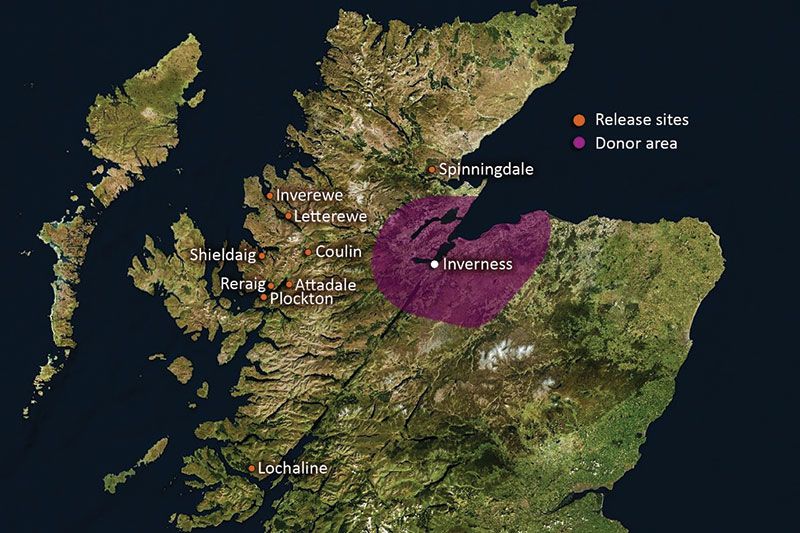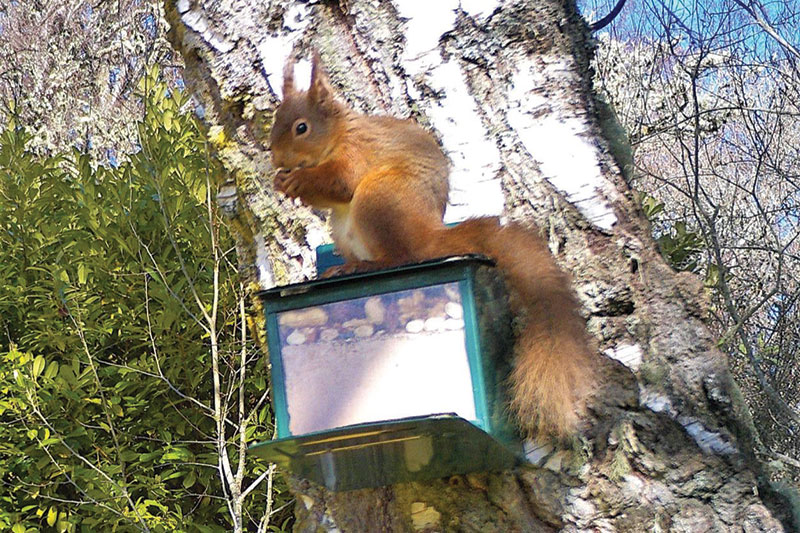Since spring 2016, 184 red squirrels have been released into the wilds of the Scottish Highlands. Becky Priestley and Alan McDonnell, from Trees for Life, have been spearheading a mission to return reds to the north and establish a stronghold for them. Further south, and in England and Wales, our native red squirrels are not faring well. They now have to compete with their larger American grey cousins, who have settled in well throughout most of our towns and much of our countryside.
Careful translocations
Once a species has been lost from an area the two main options are to wait for them to return naturally, or to speed the process up by giving them a helping hand. Red squirrels are known to be sensitive and previous attempts to reintroduce populations in England have not been successful. Translocations, if carried out well, can be a quicker and therefore less stressful option. But they require a lot of skill. Becky is one of only three people in the UK who can carry out red squirrel translocations successfully. She successfully took almost 200 red squirrels from donor populations in an area surrounding Inverness, and released them into forests further west and north. A maximum of two squirrels were taken from any one area so that no negative impacts were felt by the donor populations.
Camera trap showing a female red squirrel still with swollen nipples indicating that she is or has recently been lactating.
Each squirrel was given a health check in the field and then, once passed fit, they were transferred into specially-built nest boxes lined with hay and provisioned with peanuts and a slice of apple for the journey. At the release site the boxes were secured to trees and the exit hole lightly stuffed with moss. This meant that the squirrels were able to exit the boxes at first light the next morning, when there are no people around, and they felt safe doing so.
Members from Becky’s team of staff and volunteers visited each new population for six months after their release to provide them with extra food whilst they settled into their new homes and became accustomed to their new habitat. They are delighted that they had no losses during translocation, other than one animal which was subsequently found to have had pneumonia.
Now for long-term monitoring
Now Becky, Alan and the other team members want to monitor the red squirrels to see how the populations do in the long term. They had hoped to reach a target of doubling the number of squirrels in each new population. But this would involve counting individuals, which would mean trapping them. As well as taking a huge amount of people time it could also cause the squirrels unnecessary stress. Instead the team has decided to assess success through monitoring the presence and absence of feeding signs and aiming for the new populations to expand beyond their new woodland homes and settle in the surrounding habitat too. If feeding signs are found across larger areas, it is likely the population is expanding.
Signs of success
Even though there are still more translocations planned, there are already many signs of success. All of the populations are thriving, have evidence of breeding and are expanding. Young squirrels have been regularly sighted across the release areas and there are abundant natural feeding signs at all sites. Some red squirrels have even colonised woodlands further afield, up to 17km from the release sites. Nine new populations of red squirrels have been created. They are free from the threat of competition and disease from grey squirrels and so will be able to flourish and expand freely throughout the available habitat. This increase in both the number and range of reds squirrels will potentially make a huge contribution to the long-term conservation of red squirrels in the UK.
Learn more about Becky’s work by visiting her project page:
All images credited to Trees for Life.


